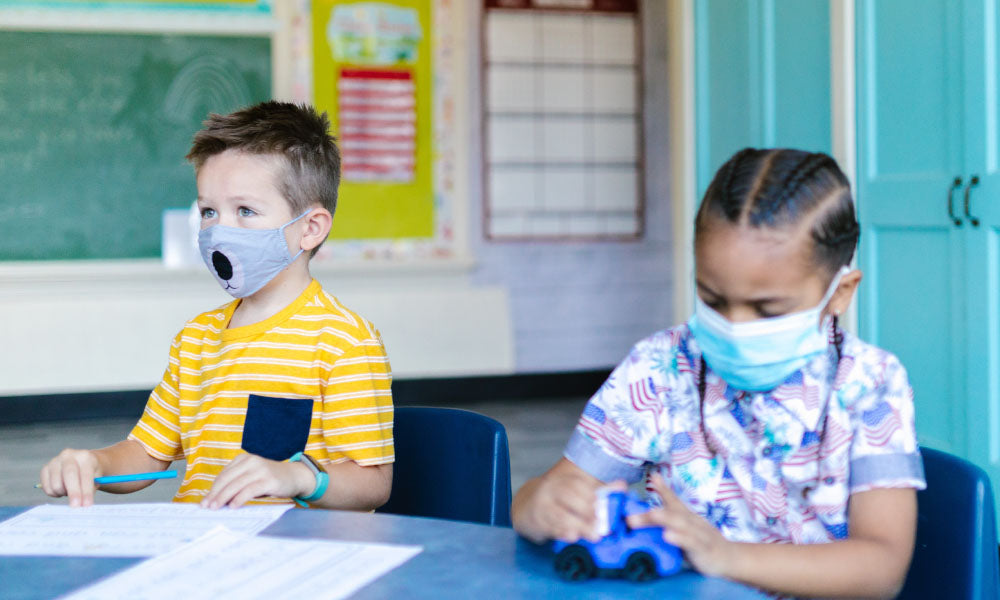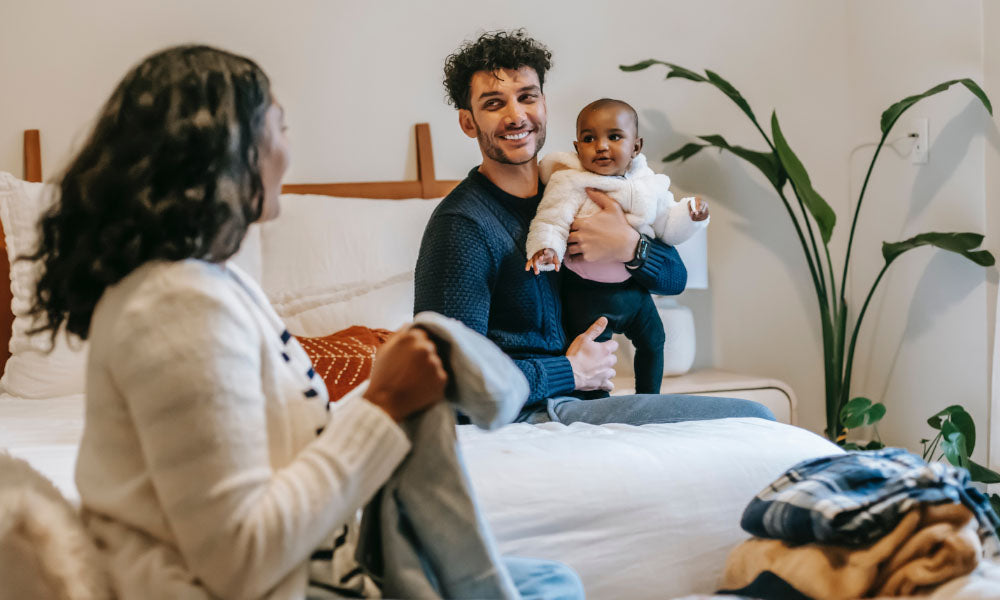My daughter was born April 2020, an original Covid-19 pandemic baby. I labored for many, many hours in a mask, as per hospital rules. It was especially unpleasant as I threw up again and again, and that awful taste became trapped underneath my hospital issued paper mask.
Thankfully, most days in a mask are not nearly so dramatic. In two years of pandemic life, we’ve all become accustomed to wearing our masks on public transportation, to the grocery store, and if we have a kid in school—or work in a school—to school every single day.
That’s all changing. The Centers for Disease Control and Prevention issued new Covid-19 guidelines at the end of February, recommending masks be worn indoors only in areas of high community risk. Around 19 million children are no longer encouraged or required to don masks at school. This was the first week my daughter’s preschool no longer mandated masks for kids over two. (One of my daughter’s first words was “mask.”)
The new approach comes at a time when cases and hospitalizations across the United States have plummeted, and the omicron wave is coming to an end. Yet many kids and parents remain anxious, or foster a complicated mix of emotions: relief, worry, and uncertainty. With vaccines still unavailable for kids under five and vaccination rates relatively low for older children, families remain in a precarious spot.
“Sometimes I pick up my daughter and she is wearing her mask, and sometimes I pick her up and she is not,” says Stacey Darin, an Assistant Attorney General in Maryland and the mother of a pre-school daughter and a baby boy. At her daughter’s preschool, masks are optional. She asks that her daughter wear hers.
“We have probably tried every type of mask under the sun trying to find one that she will wear consistently,” explains Darin. “It is tough when we are not there to encourage her to wear it and when the other kids aren’t required to wear it. I’m feeling better now that the numbers are better, but also anxious about new variants and the delays in vaccines for kids under five.”
Since children younger than five still can’t get vaccinated against Covid-19, the stakes are high. “My kids are two and four and so unvaccinated,” explains Yvo Sin, a food blogger in New York City. “I’m feeling very conflicted. Our schools will stop mandatory masking next week and I’m feeling anxious, even though I can’t put my finger on why exactly.”
Regardless of the level of disease in a community, “people may choose to wear a mask at any time, based on personal preference,” says Greta Massetti, a CDC official leading the agency’s Covid response. People are urged to wear a mask if they have symptoms, have tested positive, or if they have been exposed to someone with Covid.
The end of mask mandates means that masking is no longer a government-imposed requirement. Families can still choose whether their child should be masked, and school districts and individual schools also make their own rules.
“It just feels like, my job as a parent is to keep my kids safe and maybe the masks help me feel like I'm actually doing something when they are somewhere I can't be,” adds Sin. “Today is day two of no mandatory masks in schools for my four-year-old, so we'll see going forward.”
We’ve all been through a lot in the last two years. A sudden change is not easy for kids, either, who may be uneasy at yet another shift in the rules. After all, for young kids, masking has been the norm for much of their lives. My daughter hasn’t glimpsed the lower half of her teacher’s face. Some say wearing masks may interfere with language development; and many kids struggle to keep their masks on properly all day.
As more plans and activities pop up, “I am definitely anxious about going back to a more ‘normal’ life,” says Darin. “It’s so hard to know what’s the best decision to protect our kids.”
I’m thrilled that my daughter won’t have to wear a mask when she turns two in April, but I’m not completely free of concern. Like many families, we spent months avoiding all gatherings and have been incredibly cautious. And like many families, our caution and concern have ebbed and flowed, and it’s been a constant, often exhausting calculation to navigate pandemic life. Should we celebrate her birthday? Should we send her to preschool? There are not easy answers.
Help your kids navigate the uncertainty with compassion and kindness. Perhaps offer some sample scripts they can use if people ask questions about wearing (or not wearing) a mask, like: “My mask is to help protect my grandpa who’s high-risk.”
We’ve gotten used to every decision coming with a host of drawbacks and benefits, and masks are no exception. Whatever we decide to do, I hope we can lead with respect and generosity. Our precautions may be changing, but these values can remain constant.



